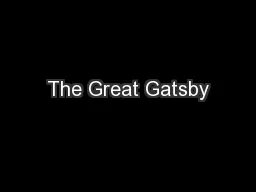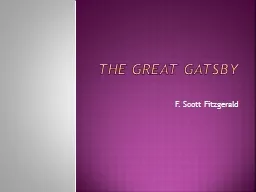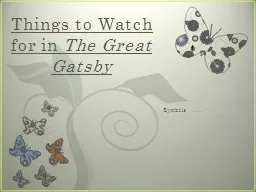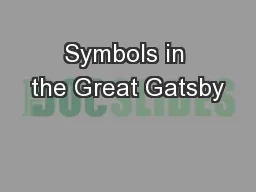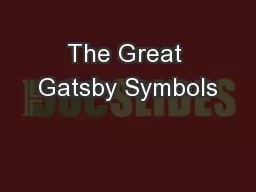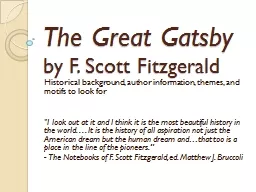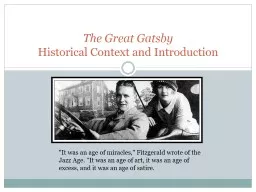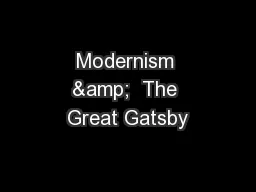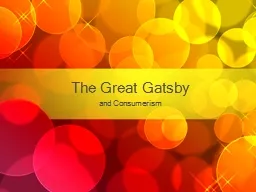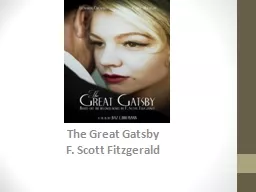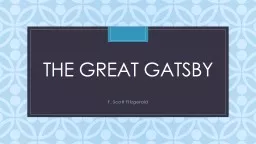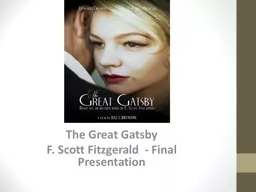PPT-The Great Gatsby F Scott Fitzgerald
Author : tatiana-dople | Published Date : 2018-03-18
F Scott Fitzgerald Francis Scott Key Fitzgerald was born in St Paul Minnesota in 1896 His middleclass parents constantly overextended themselves financially In
Presentation Embed Code
Download Presentation
Download Presentation The PPT/PDF document "The Great Gatsby F Scott Fitzgerald" is the property of its rightful owner. Permission is granted to download and print the materials on this website for personal, non-commercial use only, and to display it on your personal computer provided you do not modify the materials and that you retain all copyright notices contained in the materials. By downloading content from our website, you accept the terms of this agreement.
The Great Gatsby F Scott Fitzgerald: Transcript
Download Rules Of Document
"The Great Gatsby F Scott Fitzgerald"The content belongs to its owner. You may download and print it for personal use, without modification, and keep all copyright notices. By downloading, you agree to these terms.
Related Documents


